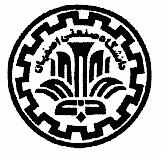Isfahan University of Technology
Software Radio Course Project ( spring-summer 2007)
Shima kheradmand
Timing Recovery:
Introduction
2 Basic Functions for Digital Timing Recovery
Derivation of Synchronization Algorithms:
4.Timing Error Feedback Systems at Symbol Rate
Introduction
Synchronization is one of the most critical receiver function in all synchronous communication systems (either analog or digital receivers) and it is necessary for the optimal performance of the receiver. The received signal is corrupted by noise and is subject to a delay due to transmission across the channel.In fact timing recovery is an attempt to find this time delay since imperfect knowledge of this delay affects the bit error rate (BER) of the receiver. In early systems, the timing information was transmitted on a separate channel but it's obvious these systems suffer from inefficient utilization of bandwidth and poor jitter performance that is unacceptable in digital communication systems(specifically in a software radio) which must be efficient in power requirements and bandwidth occupancy. In these systems a symbol is transmitted once every T seconds. At the receiving end the optimum receiver consists of a matched filter at the front end. In digital receivers, we will sample the signal and digitize it. The signal-to-noise ratio (SNR) at the output of the matched filter is time varying. Therefore it is critical to sample at the instant of maximum SNR. The SNR is maximum when the sampling instants coincide with that of the transmitter's clock.The intersymbol interference (ISI) is also minimum at these instants. This will mean that we will have to extract the symbol transitions from the received data.
shima_kheradmand@yahoo.com
